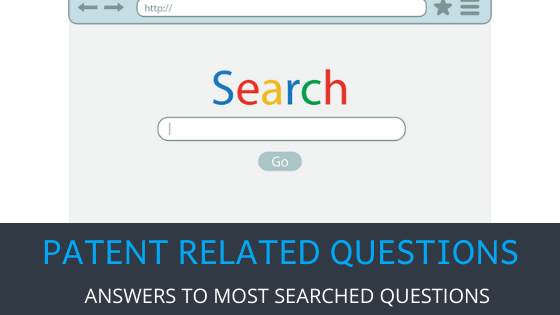
Every enterprise needs to explain basic terminology and commonly asked questions. You would be surprised how the most basic questions are never asked.
To get the most engagement with a patent program, training and socialization are key. Many companies have made patent training part of orientation for their new technical staff. Periodic refresher courses are also offered. Typically, your patent counsel will offer this training for little or no cost.
This FAQ has a compilation of queries that bubbled up from several large companies from their employees.
What is a Patent?
A patent is a grant by the U.S. Patent and Trademark Office of the right to stop others from making, using or selling an invention in the United States for a limited period of time. Let’s explore this in detail:
- A patent is a “grant”, therefore you do not have it until the government awards it to you (in other words, you have no right to enforce a patent against anyone else until the patent has been issued).
- A patent provides the right to stop others, and not necessarily the right to do anything yourself. Someone else may have a patent that prevents you from doing anything with your own invention, even though your invention is patentable.
- A patent gives the right to stop others from making, using or selling. For example, if someone who was infringing on a patent were to make the invention in a foreign country, he or she could not sell it in the United States.
In the same way, it is still considered to be an infringement if the invention is made in the United States but exported immediately, or if a person buys the invention overseas and uses it in the United States for their own use. There is no “personal use” exception for patent infringement. - Patents can only be awarded for inventions.
- Patents are awarded by the U.S. Patent and Trademark Office. For that reason, a patent can only be enforced within the United States.
- A patent has an expiration date. Once a patent has expired, the invention may be freely used by anyone, as long as no other patent would prevent it.
What All can be Patented?
Anything under the sun that is human created—any new idea that has not otherwise been disclosed or otherwise published more than a year ago. There are different kinds of patents, although only the first two will likely be of interest:
- Provisional Patent — Precursor to a utility patent that serves as a one-year placeholder to quickly secure a filing date while preparing a formal utility patent.
- Utility Patents — Cover science and technology, such as:
- Methods or processes, such as software or other functionality
- Apparatuses and systems (e.g., cell phones, computer systems, point of sale devices, etc.)
- Chemical compounds and engineered biologicals and their methods of use
- Improvements or updates to any of the above
- Design Patents — Cover the ornamental features of useful objects, but not the functionality (e.g., the ridge pattern of a golf club grip, shape of a cell phone).
- Plant Patents — Cover certain types of plants that are genetically the same.
What cannot be Patented?
- Mental processes or human performed actions (e.g., medical procedures).
- Mathematical formulas and algorithms in the abstract, but once applied to a given situation they are candidates for patent protection.
- Hopes, dreams, aspirations or other abstract ideas unless a technological or scientific solution to achieve them is devised with some specificity.
- Basic ‘methods of organizing human activity,’ such as fundamental economic practices like market hedging and escrow transactions.
- Naturally occurring things that have not been invented, but rather found (e.g., genes, minerals) unless you are protecting a refined version or how it is used to solve some problem (e.g., proteins used to cure a specified disease, use of carbon in the form of graphene for a space application).
- Scientific principles or laws of nature (e.g., gravity, conservation of energy, Pythagorean theorem) unless applied to a specific problem.
- Inventions that only serve the purpose of making atomic weapons, human-performed healthcare, tax shelters, and a few others.
What Qualities must Something Possess in Order to be Worthy of a Patent?
Generally, any innovation created by humankind and implemented with technology is patentable. This presumption may be tempered by a discussion with patent counsel, but don’t discount incremental or slight improvements until you have legal guidance. There are three general requirements for patentability:
- “Novel” means the invention has never been disclosed, released or published by another prior to you inventing it. Once your innovation is known to others, you only have one year to apply for a patent, but may have lost your overseas rights. Your own actions in the year prior to your application for patent.
- “Non-obvious” is a legal test not to be confused with the dictionary definition of that term. It does not mean self-evident as most might presume. Most innovation is fairly derivative, but if your novelty has advantages over prior solutions you are well on your way to overcoming this hurdle.
- “Utility” means that the innovation you invented does something over what is naturally occurring. It cannot be too abstract an innovation and built with technology.
Should We Patent Every Innovation?
The pursuit of every patentable innovation would bankrupt most enterprises. Devising a strategy and trying to accomplish that within a budget will often dictate decisions.
A process for selecting the best innovation most crucial to protecting our investments in new products and services is the goal. Legal or members of any patent committee can often provide guidance.
Also Read: 10 Types of Innovation to Drive Growth at Your Company
What will it Cost to Obtain a Patent?
Depending on the complexity of the invention, technology area and amount of argument, the entire process of obtaining a patent can cost between $20,000 and $50,000 in most cases over several years.
The cost is split between drafting, argument and government fees, some of which occur after issuance in the form of annuities or patent taxes.
Also Read: 6 Things to Know Before Hiring a Patent Attorney
What Steps are Typical in the Process of Prosecuting a Patent Application?
Identification
The inventor completes an Invention Disclosure Form or some other form of written disclosure (such as a white paper) which provides a description of the invention and other important information.
Sometimes a patent mining session is helpful to brainstorm possible patent ideas and can be facilitated by patent counsel.
Vetting
There is no requirement to search ourselves as the patent office conducts a thorough search. Public databases (e.g., Google Patents) allow quick review of what might already be filed, but search vendors can often do a far more effective search. There are different strategies for searching or not that patent counsel can walkthrough.
Approval
Some enterprises formalize approval with a patent committee that looks at the merit of an idea with respect to strategic vision. It need not be that formal so long as both the technical and strategic considerations are represented as ideas are selected for patent protection.
Drafting
Patent counsel interviews the inventors to develop a broad understanding of the idea, related technology and how it might evolve. A draft provisional or non-provisional is produced within one to three months typically.
Also Read: 3 Ingredients for High Quality Patent Applications
Filing
Once the draft is approved by the inventors, it is filed with the patent office for an examination. Feedback general comes in 6-24 months depending on whether the filing was fast-tracked.
Argument
Only a very small percentage of cases are approved without push back from the patent office. The argument phase can be as short as 6 months or go on for years. Two-four rounds of argument are typical before allowance.
Maintenance
Issued utility patents expire no matter what 20 years from their earliest priority date. They expire sooner unless escalating government fees are paid at 3.5, 7.5 and 11.5 years into their term.
If I submit an idea related to my job, and it is not approved, can I pursue it on my own?
No, ideas are created as part of your job duties the pursuit or not of patents are within the sole discretion of your employer. That your idea is not approved doesn’t mean that it will never be. A good patent program has an excess of innovation that is strategically pursued so long as budget permits.
Should you have an idea completely unrelated to your job duties and not developed using company resources may be treated differently so long as any moonlighting policy is complied with. Legal can review and approve such pursuits and provide written approval.
How can I tell if my Team’s Invention is Patentable?
Inventors can conduct a novelty search to determine whether any previous patents exist similar to a particular invention.
It is recommended to use http://patents.Google.com to search patents and literature to at least get a flavor of what others have done in your space that is similar to your innovation. Other paid tools are available for searching as are third party search firms.
Who is an Inventor?
The US patent office requires identification of the inventors with full legal name (including any middle initial), address to receive correspondence and city and state of residency.
There are typically 1-5 inventors listed on a patent, but the legal standard on who to include is tricky. On a provisional patent, it is anyone who contributed to the innovation disclosed. Where there are claims, an inventor is anyone who contributed to the conception of one or more of the claims.
Notably, implementers are not necessarily inventors and the same goes for with managers and mentors, etc. Deception about inventorship can invalidate the patent along with the other members of the patent family so don’t play games with attribution and stick to the legal standard.
Once Patented, Can I Sell or License My Invention?
No, those hired or contracted to invent cede ownership of their innovation to their employer.
Further, employment/consulting agreements further clarify enterprise ownership of the ideas you develop within the scope of your duties. Confirmatory assignments are provided throughout the patent process to memorialize this as required by the patent office and foreign patent offices.
If you think your patent would be of interest to others for sale or license, please consult with legal who might pursue such avenues in consult with your management.
Also Read: How to seek investments using patents?
How Long is a Utility Patent Enforceable?
A utility patent is valid from the issuance by the patent office and ends 20 years after the date of filing of the earliest non-provisional application upon which the patent is based.
There is a patent term extension that will extend that window if the process at the patent office was backlogged through no fault of your own. Plant and design patents have different terms.
Can a Patent be Extended or Renewed to get a Longer Term?
Not unless patent term extension was recognized by the patent office at the beginning of the patent term or sometimes for delays while pursuing FDA approval.
Once a patent expires, the claimed invention and anything described is permanently dedicated to the public domain.
Can we still Obtain a Patent even if My Invention was Released in Our Product or Otherwise Known to Outsiders?
Domestically, you must apply for a patent within one year of the first publication, but most foreign countries bar patent rights any time after publication.
Would a Knock-off Competitor be Able to Make Minor Changes to Avoid My Patent?
The patent laws contemplate someone designing around your patent claims, but deciding how well that was done is complex. When determining the scope of your patent, the claims are what defines your right to exclude others.
Patent counsel can assist with interpreting the applicability of claims to the competitor.
Can’t I Simply Insert a Description of My Invention in a Sealed Envelope and Mail it to Myself, for Protection?
No. Patent protection requires a filing with the patent office as only the government can provide those rights.
Additionally, it is a race to the patent office as the first filer will almost certainly get the enforceable patent.
Does Our Patent Protect Me Worldwide?
No. Rights are given country-by-country with some regional filings possible (e.g., Europe, Africa, Russia) to ease certain parts of the process. There are treaties that ease your process for obtaining rights in multiple jurisdictions (e.g., Paris Convention & Patent Cooperation Treaty).
It gets expensive very quickly with each jurisdiction costing $25-75K for that geographic protection. Patent counsel has strategies for maximizing coverage while minimizing expenses.
Also, not all jurisdictions are equal when it comes to enforceability so some are not very good at excluding the competition.
Also Read: Foreign Patent Filing: 5 Strategies to Develop an International Patent Portfolio
Can We Obtain a Patent on My Invention without Disclosing the Important Aspects of My Invention?
Generally no. The government grants a limited monopoly for your patent claims in exchange for full disclosure. There are strategies for keeping some ideas out of a patent that your counsel can help with.
Not being a U.S. citizen and/or Resident, Can I Still Obtain a U.S. Patent?
Yes. You can get a U.S. patent, but some countries require permission to file overseas first. Patent counsel can research the specifics and devise a filing strategy.
Should We File a Provisional Application?
A provisional patent simply lets you secure a filing date without going through all the steps required for a utility patent application. With the limited formality required, provisional patents are often the only thing possible given a certain time crunch. For example, a paper describing a product may be going public tomorrow, and that paper might be quickly filed as a provisional patent. Since a provisional patent is never examined or confers any rights, a regular utility patent application is required within a year anyway.
Should I File a Patent with the Patent Office on My Own?
No. Please coordinate with legal who handles this on a regular basis and has a relationship with counsel.
When do I say “Patent Pending” or “Patented?”
“Patent pending” for a product simply means that you have a patent application on file at the U.S. Patent Office.
You can mark your product “Patent Pending” only if you have filed a patent application that would cover part of the marked product, and the application has not been abandoned or withdrawn.
“Patented” means that the patent is issued and not expired. Listing the patent numbers covering the product somewhere on the box, enclosed materials, on the product itself, or virtually on the web site is recommended.
How do I read a Patent and Understand the Scope?
The claims define the scope of the right while the remainder of the patent application provides context, clarification and additional detail. A patent claim is simply a statement, but it can be very difficult to read so reach out to counsel to help.
What are Annuities/Maintenance Fees/Patent Taxes?
Patent offices around the world have schemes to encourage pruning of patents by charging fees even after issuance.
Consider abandoning your patent when those fees come due to give your non-strategic ideas to the public domain. These government fees are a great funding source paid by those with the more important patents. For larger and/or international patent portfolios, most will use an annuity service to pay these fees in a process similar to what you might have done with your favorite domain registrar who tacks on a service fee to each renewal.
If you only have US patents, payment at the USPTO.gov site is fairly straightforward so you might avoid service, but be sure to not miss the deadlines of 3.5, 7.5 and 11.5 years from the issuance of your utility application.
Also Read: Types of Intellectual Property and Related Costs
What is a Patent Troll?
The pejorative term describes an entity that does not currently produce anything, yet owns and asserts patents against others.
Sometimes called a non-practicing entity (NPE), the only purpose of these companies is to pursue license revenue while threatening suit.
Commonly, the settlement amounts are very low to avoid having any defendant truly challenge a patent. Targets are faced with the prospect of fighting assertion at great legal expense or quickly disposing of the suit.
Provide your email address and we will send you a copy of the FAQ.
List any unanswered questions in the comments below so that they might be added to future iterations.
Feel free to use and modify under a Creative Commons BY-SA license.
Note: The preceding is general business advice and not to be construed as legal advice. IP laws vary by country and retaining licensed legal counsel is advised to confirm this information. Any expressed or implied opinions are of the author and do not necessarily reflect the views of Triangle IP or any other entity who might be associated with the presenter. We hope this content is helpful to you, but should not be relied upon without confirming the advice and accuracy with local legal counsel. Any comments or inquiries are not confidential so please discuss your issues directly with counsel.

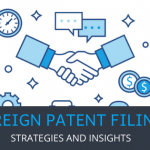
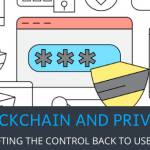
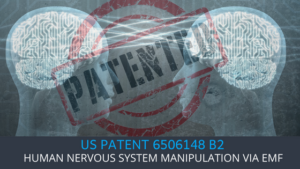
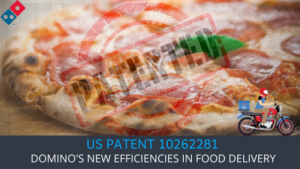
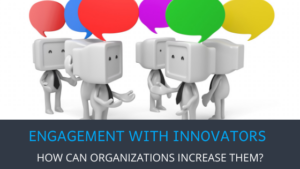
2 Comments
It’s appropriate time to make some plans for the future and it’s time to be happy. I have read this post and if I could I want
to suggest you some interesting things or advice.
Perhaps you can write next articles referring to this article.
I desire to read even more things about it!
Sure thing. You will find more such articles on our blog soon.